You are using an out of date browser. It may not display this or other websites correctly.
You should upgrade or use an alternative browser.
You should upgrade or use an alternative browser.
Essential The Official ESPN Insider Thread (ESPN+)
- Thread starter the cool
- Start date
More options
Who Replied?Deals, trades NBA teams can still make with their cap space
As we saw in looking at the best remaining free agents on the market earlier this week, there's not much talent left for NBA teams to sign.
Still, because of the huge leap in the salary cap this season, several teams still have plenty of money left to spend.
Let's take a look at where teams stand relative to the cap, from most space remaining to least, and what those teams might end up doing with their money.
1. Philadelphia 76ers: $25 million
The Sixers are the last remaining team with max-level cap space, though that won't do them much good at this point.
In fact, Philadelphia's bigger obstacle is roster spots. The 76ers don't have enough room to sign free agents Anthony Barber and Brandon Paul to reported minimum contracts because that would give them 21 players -- one more than the NBA's offseason limit of 20.
Barring a trade, point guard Kendall Marshall will probably be the odd man out because his $2 million salary for 2016-17 guarantees before training camp. Waiving Marshall would push the Sixers' cap space even higher.
At this point, Philadelphia seems likely to preserve its cap space until the trade deadline. The 76ers would have the option of trading one of their centers (Nerlens Noel and Jahlil Okafor) for a veteran making far more money. Or Philadelphia could try to take back a salary another team is trying to shed, though the rising cap makes that scenario less likely except with fringe players like Sasha Kaun, acquired by the Sixers to help trim the Cleveland Cavaliers' luxury-tax bill and waived shortly thereafter.
2. Brooklyn Nets: $18 million
After their offer sheets for restricted free agents Allen Crabbe and Tyler Johnson were matched, the Nets couldn't realistically spend all their remaining cap space. They now have a full roster of 15 guaranteed contracts and plenty of money left, though it would be easy for Brooklyn to eat a minimum contract if the team added another player.
The Nets could still make a run at another restricted free agent, Crabbe's teammate Maurice Harkless, with an offer sheet that would force the Portland Trail Blazers to pay the luxury tax if they match. Barring that, Brooklyn might also wait for trades. The Nets have been careful to preserve their 2017 cap space, currently projected as high as around $40 million.
3. Denver Nuggets: $17 million
The Nuggets' estimate is fuzzy relative to the other teams with substantial cap space. It includes an estimate of Mike Miller's salary on a deal that ESPN's Marc Stein reported was in the $6 million range, as well as a cap hold for No. 15 pick Juan Hernangomez, who might not play in the NBA this season.
If Hernangomez does stay overseas, Denver could get as high as $22 million by waiving three players with non-guaranteed contracts. Alas, since Dwyane Wade passed on their offer, the Nuggets seem unlikely to spend that money.
4. Minnesota Timberwolves: $13.5 million
Having recently signed Jordan Hill, the Timberwolves are now at 15 players under guaranteed contract, though it's unclear whether Kevin Garnett will try to play a 22nd season. If Garnett retires, that could open another roster spot for Minnesota.
The Timberwolves will want to protect next season's potential max-level cap space. The second season of Hill's two-year, $8 million deal is non-guaranteed.
5. Phoenix Suns: $13 million
Earlier this week, Suns GM Ryan McDonough told the Arizona Republic, "I'd be surprised if we spent a lot of that cap space now or over the summertime." Harkless doesn't make much sense for Phoenix, which already drafted a pair of forwards, Dragan Bender and Marquese Chriss, and signed veteran combo forward Jared Dudley.
So, with 13 players under guaranteed contract and two more with non-guaranteed deals (guard John Jenkins and center Alan Williams), the Suns are likely to stand pat.
6. Utah Jazz: $10 million
While the other teams who've yet to spend to the salary floor are mostly rebuilding, the Jazz figure to contend for home-court advantage in the Western Conference playoffs without spending to the cap, an impressive feat.
Since Utah's roster is already overflowing, the best use of the remaining space would almost certainly be renegotiating and extending the contract of either guard George Hill or forward Derrick Favors, similar to the deal the Houston Rockets struck with James Harden earlier this month.
7. Los Angeles Lakers: $10 million
The Lakers have delayed signing No. 2 pick Brandon Ingram, and have put off re-signing restricted free agents Tarik Black and Marcelo Huertas, in case they can find some way to use their cap space before then.
That seems unlikely since the Lakers have already added Jose Calderon, Luol Deng and Timofey Mozgov this summer to meet their most glaring needs, but from the Lakers' perspective, there's little downside to waiting. They could also create another $3 million or so in space by waiving guard Nick Young and stretching the remaining two seasons of his contract.
8. Indiana Pacers: $6.5 million
Indiana is another team that could consider a renegotiation and extension -- for newly acquired point guard Jeff Teague, in this case, though at this point the Pacers might not be able to offer Teague enough of a raise on his $8.8 million salary to make signing an extension with a slight raise next season worthwhile. Such a deal would pay Teague about $32 million over the next two seasons, and he might be able to match that total by playing out his contract while also being able to sign a longer deal.
9. Milwaukee Bucks: $5 million
The Bucks reportedly agreed to a four-year, $52 million deal for restricted free agent Miles Plumlee earlier this week. Milwaukee can use its remaining cap space before signing Plumlee using Bird rights, and with just 13 players on the roster (including unsigned second-round pick Malcolm Brogdon), the Bucks will want to add another wing. Alan Anderson and Kevin Martin are reasonable candidates to supply necessary shooting.
10. Boston Celtics: $4 million
This figure includes the cap hold for center Tyler Zeller, a restricted free agent, as well as the non-guaranteed salary of John Holland. Were the Celtics to waive Holland and renounce Zeller's rights, they could get up to about $12 million in cap space. That would make Boston a player for Dion Waiters, and possibly the only real alternative to the Cavaliers for unsigned J.R. Smith.
The Celtics have yet to sign their lottery pick (Jaylen Brown), which indicates that they're not completely done shopping yet.
11. Oklahoma City Thunder: $1 million
Technically, the Thunder are probably close to capped out after agreeing to a three-year, $18 million deal with 2013 second-round pick Alex Abrines. But that figure includes a cap hold for Waiters, whose qualifying offer Oklahoma City rescinded after adding Abrines. Despite making Waiters an unrestricted free agent with that move, the Thunder still hold his Bird rights, and renouncing those would give OKC more than $14 million in cap room.
One intriguing possibility: The Thunder could make an offer to Harkless a year after the Blazers forced them to match an offer sheet to restricted free agent Enes Kanter. Harkless doesn't fill an obvious need for Oklahoma City but would fit well with the Thunder's young core given his age (23), size and athleticism.
That's it for teams likely to use cap space. The rest are limited to exceptions, as follows.
Taxpayer mid-level exception ($3.5 million): Cleveland Cavaliers (approximately $2.5 million committed to Richard Jefferson)
Room exception ($2.9 million): Charlotte Hornets, Chicago Bulls, Detroit Pistons, Miami Heat, Orlando Magic, Portland Trail Blazers, Sacramento Kings, Washington Wizards
Bi-annual exception: Toronto Raptors
Only minimum-salary exception remaining: Atlanta Hawks, Dallas Mavericks, Golden State Warriors, Houston Rockets, L.A. Clippers, Memphis Grizzlies, New Orleans Pelicans, New York Knicks, San Antonio Spurs
THASTUNNA
All Star
Top trade targets (plus best fits): Sale, Lucroy drawing plenty of calls
The MLB trade deadline is now just a week away (Aug. 1), and as Houston Astros GM Jeff Luhnow told me this weekend on my SiriusXM radio show, GMs must check in with one another at least every two days because the market is so fluid.
Some of the highlights:
• The White Sox shook up the industry last week when GM Rick Hahn publicly stated that he would "listen" to offers for lefty ace Chris Sale, and his phone hasn't stopped buzzing since.
• The Yankees appear ready to move Aroldis Chapman, with the status of trading one or both Andrew Miller and Carlos Beltran still up in the air.
• The Indians would love to pry Jonathan Lucroy and a reliever away from the Brewers, but not at the present asking price.
• The A's are waiting for better offers for both Rich Hill and Josh Reddikk.
• The Marlins and Orioles are both committed to getting starting pitching help.
• The Cardinals, Nationals and Giants are convinced they'll get bullpen help via trade.
This is one of the more active trade markets we've seen in recent years, with all 30 teams considering offers. That should result in plenty of trades in the next week, including a handful of big names.
With that, here's an updated list of the 16 players who could get traded, and the best fits for each player.

Chicago White Sox
Every team, contending or not, should be interested in Sale. We're talking about the AL Cy Young Award front-runner here, and he's signed to a club-friendly deal and is controllable through 2019. It's not very often a pitcher of this caliber is made available, so it behooves the White Sox, who haven't posted a winning record since 2012 and are currently two games under .500, to at least see if a team will overpay for him. Considering how weak their farm system has become, they might consider something like a 5-for-1 offer. I still think it's unlikely he'll be traded, however.
Best fits: Red Sox, Rangers, Cubs, Nationals, Dodgers, Astros

New York Yankees
Chapman, a free agent at season's end, is the No. 1 trade target for the Cubs, Nationals and Indians. He's considered a postseason difference-maker, not just because of his dominant stuff and status as one of the game's best closers, but because he's left-handed and could neutralize some of the impact left-handed bats -- Bryce Harper, Anthony Rizzo, David Ortiz -- in a close playoff game.
Best fits: Cubs, Nationals, Indians, Astros

Tampa Bay Rays
Moore's stock is soaring, as he's finally healthy and has thrown six or more innings in nine straight starts, yielding three earned runs or fewer in all but two of them. The Rays are looking for inexpensive long-term bats in return and match up well with the Texas Rangers, who could dangle Joey Gallo or Jurickson Profar. Also, the Pirates could offer first base prospect Josh Bell or outfield prospect Austin Meadows.
Best fits: Rangers, Pirates, Dodgers, Marlins, Orioles

Oakland Athletics
Hill's groin injury has healed, and now the A's are hoping his blister will do the same so he can make one more start to show interested teams that he's healthy and can continue to pitch well. The A's have maintained a high asking price for him -- which they should, especially given the return the Padres got for Drew Pomeranz.
Best fits: Marlins, Orioles, Pirates, Blue Jays, Rangers

Milwaukee Brewers
The injury to Indians No. 1 catcher Yan Gomes made Lucroy their second trade priority, after bullpen help. They're hoping to do a little one-stop shopping with the Brewers, possibly landing Lucroy and either Will Smith or Jeremy Jeffress. Other teams that need Lucroy's services include the Rangers, White Sox and Astros, but those teams don't seem to be as interested as they should be.
Best fits: Indians, Mets

Tampa Bay Rays
The Marlins, Rangers and Dodgers have all talked to the Rays about Odorrizzi, a solid middle-of-rotation starter. His past two starts were impressive -- a combined 14 innings and only two earned runs -- and he did that in front of several scouts from other teams. It's doubtful the Rays will deal both Moore and Odorrizi, so it might come to whichever team offers the best package for either player.
Best fits: Rangers, Dodgers, Pirates, Marlins, Orioles

Kansas City Royals
It's doubtful the Royals jump into an all-out sell mode, but with so many star players that are free agents following the 2017 season -- Eric Hosmer, Lorenzo Cain, Alcides Escobar -- combined with a weak farm system, it could make sense for them to take advantage of the strong demand for an impact closer from contending teams at this deadline. If they can pry away future arms from the Nationals or position-player prospects from the Cubs, they should do so, as Davis' stock will never be higher. The Royals are still in the 2016 race, of course, but they shouldn't lose sight of 2018 and beyond.
Best fits: Nationals, Cubs, Giants, Dodgers, Rangers, Astros, Red Sox, Indians

New York Yankees
The Yankees haven't decided whether they're going to sell at the deadline, but if they do, Chapman and Beltran are the most likely to be dealt since they'll be free agents at season's end. Beltran has had a strong season, and his incredible postseason track record should make him attractive to contending teams. He fits best with an American League club, such as the Indians, who could have him DH a few days per week to keep him strong for the playoffs.
Best fit: Indians

Cincinnati Reds
Bruce made the NL All-Star team for the first time since 2012, and thanks to his left-handed power, he should bring a strong return from teams looking for offensive help. That said, if the trade offers for Bruce don't improve, the Reds might just hang on to him until the offseason and try to move him again then. He has a $13 million team option for 2017.
Best fits: Dodgers, Indians, Giants, Mets, Blue Jays

Philadelphia Phillies
Phillies GM Matt Klentak has been extremely busy fielding calls from opposing GMs not only for players on his big league roster but throughout his improved farm system as well. The Phils will have to wait patiently for the top of the reliever market to be moved before they can get their best offer on Gomez.
Best fits: Cubs, Giants, Dodgers, Red Sox, Blue Jays, Astros, Cardinals

Milwaukee Brewers
The Brewers are getting a lot of hits on their bullpen, and GM David Stearns is listening on everyone. Selling high on Jeffress makes sense here, especially given the strong demand for bullpen arms.
Best fits: Giants, Red Sox, Blue Jays, Mariners

Oakland Athletics
His fractured left thumb has healed, but he had to sit out this weekend with back soreness. The A's have tried in earnest to sign him to a long-term contract, but those negotiations have failed, leading to the probability that he'll be dealt over the next week. There are not a lot of teams looking for a corner outfielder, but he could be one of the highest-valued trades at the deadline.
Best fits: Cubs, Royals, Indians, Giants

Los Angeles Angels
The Angels find themselves in last place in the AL West, and although they don't have much to sell, they should get a good return for Shoemaker because of the thin starting pitching market. Shoemaker has given up three runs or fewer in all but one of his last eight starts.
Best fits: Marlins, Orioles, Pirates

San Diego Padres
Padres GM A.J. Preller has been the best "seller" in baseball so far, getting ahead of the industry in dealing away Drew Pomeranz, James Shields and Fernando Rodney, landing three high-caliber prospects in the process. And he's not done. Cashner's value is building, as he has begun to pitch much better.
Best fits: Marlins, Orioles, Rangers

Philadelphia Phillies
With so many contending teams looking for back-of-rotation innings-eaters, such as the Orioles, Marlins and Pirates, the Phillies should get a better-than-expected return for this sinker-baller.
Best fits: Marlins, Orioles, Pirates, Blue Jays, Rangers

San Diego Padres
Upton seems to have turned things around this season and has an outside shot at joining the 30-homer/30-steal club (he's on pace for 26 homers and 33 stolen bases). The Orioles, Blue Jays and Indians have all stayed in touch with the Padres about him.
Best fits: Orioles, Indians, Giants
Big Ten forecast: Can anybody beat Michigan or Ohio State? (Hint: No)
There's not much debate about the Big Ten these days: The East is loaded and the West is -- well, let's just say the conference champ is probably going to mow through whoever wins the West.
In other words, the league's best playoff chance most likely will be Michigan, Ohio State or Michigan State.
But who will it be? Here's a breakdown of how the Big Ten will play out.
East Division
1. Ohio State Buckeyes
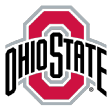
Urban Meyer is 31-1 in Big Ten regular season play since returning, but due to the fact that he has the least experienced team in the country (just 6 returning starters) they may not even be the media's pick to win the Big Ten East. The Buckeyes' schedule is more difficult as they avoided all of the top teams out of the West last year and now pull both Wisconsin and Nebraska. They also have to face Michigan State on the road. The key game to their season is probably the one they pointed to at the end of the year. They beat Michigan on the road 42-13 last year and get them at home. I will call for the Buckeyes to get to their third Big Ten Title game in four years.
2. Michigan Wolverines

The Wolverines have 14 returning starters and rank among the league's top units in almost every category this year, the most among the Big Ten contenders this year. Last year the Wolverines were plus-62.3 in yards per game differential in conference play (fourth best). This year they add Wisconsin and Iowa out of the West to their schedule and face both Michigan State and Ohio State on the road. Back in 2006, No. 2 Michigan traveled to face No. 1 Ohio St in a titanic battle. This year's clash in Columbus could not only determine the East champ but the Big Ten champ and a playoff berth.
3. Michigan State Spartans
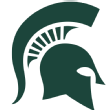
The Spartans have a lot of factors pointing down this year. They go from being the most experienced team in the Big Ten to the second-least experienced, and they benefited from plus-14 in turnovers, five net close wins last year and are minus-59 in all-conference points returning. Plus, they lose three-year starter QB Connor Cook and their top two receivers. The Spartans didn't play well last year as a heavy favorite in most games and will be back to having that chip on their shoulder this year. Making them a prime contender in the East is the fact that they get both Ohio State and Michigan at home, two teams they beat on the road last year as well as hosting Wisconsin. That makes them a clear-cut contender in the East once again.
4. Penn State Nittany Lions

Penn State got to 7-2 last year then lost its last four. This year its offense figures to be a lot more potent as coach James Franklin covets QB mobility and has it to go along with nine returning starters, including the best set of skill players (RB and WR) in the conference. Penn State will be solid on D again and also have my No. 4-rated special teams. The Nittany Lions have a schedule that makes them a possible contender, as they get Michigan State, Ohio State and Iowa all at home. Of course, if they drop those, that means a lot of winnable games are on the road. I still think Penn State will have its first winning record in Big Ten play in the past three years and that this is its deepest, most talented team since the sanctions.
5. Indiana Hoosiers

The Hoosiers were nearly the surprise team in the Big Ten last year as they took Ohio State to the final play, Michigan needed a touchdown with :00 left to force OT, they only trailed Michigan State 28-26 with five minutes left and came up just eight points short of Iowa in their battles vs. the big boys. The Hoosiers still made it to their first bowl game since 2007. This year they lose their QB and top RB to the NFL, but I like the replacements. The defense could be the best of the Kevin Wilson era, and they get five of their nine Big Ten games at home. This is a team that knows they can play with anybody, and that makes them dangerous.
6. Maryland Terrapins
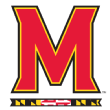
Maryland is my classic turnovers=turnaround team for this year as it was minus-18 last year showing the impact. The Terps actually allowed 15 fewer yards per game than they did in 2014, just 3.7 yards per carry rushing and 57.7 percent completions, but allowed 34.4 points per game. Despite their 1-7 Big Ten record, Maryland was only minus-30.3 yards per game. The Terrapins go from the second-least experienced team in the Big Ten to the sixth-most experienced. New coach D.J. Durkin has two assistants who were head coaches last year, so it is a more experienced staff than normal first-year coaches have. The Terps have a shot at opening up the year 4-0, which would give them a lot of confidence for when they get to the meat of the Big Ten schedule and could easily get back to a bowl this year.
7. Rutgers Scarlet Knights

Expectations were low in Rutgers' first year in the Big Ten, but Kyle Flood guided it to a 3-5 Big Ten record and a bowl. Last year it was the least experienced team in the league with a tough schedule and its secondary was wiped out just before the season. The team slipped to 1-7 and were minus-166.9 yards per game (worst in the league). New coach Chris Ash comes in with some great enthusiasm and Rutgers has 16 returning starters moving all the way up to the second-most experienced team in the Big Ten. The Scarlet Knights are strong at the line of scrimmage, No. 5 O-line and No. 4 D-line. I can easily make a case for them getting back to a bowl this year, but they do have a lot of ground to make up.
West Division
1. Iowa Hawkeyes

Last year Iowa did not dominate its Big Ten foes as they were just plus-36.6 in yards per game differential (fifth-best) despite its 8-0 record with numerous close escapes. This year the Hawkeyes' 65 percent letter winners returning are No. 100 in the FBS and there are numerous factors pointing down. While they have five Big Ten road games, none of those five foes had a winning record in Big Ten play last year (combined 10-30) and they get the key division games (Northwestern, Wisconsin, Nebraska) all at home, as well as the crossover game versus Michigan (7-0 at home in 2015). Despite finishing the regular season 12-0 last year, that 45-16 loss to Stanford will keep them out of the preseason top 10 this year, but they are my No. 3 surprise team.
2. Nebraska Cornhuskers
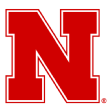
The Huskers finished just 3-5 in the Big Ten but were actually plus-28.1 in yards per game differential, lost five games in the final seconds and were basically five plays away from being an 11-2 team last year. They are now in the second year of coach Mike Riley's schemes, have seven starters back on offense and six on defense and have numerous factors pointing up. Nebraska is my No. 2 most improved team in the country this year but the fact that it plays Northwestern, Wisconsin, Ohio State and Iowa on the road have me calling for the team to come up just short in the West.
3. Wisconsin Badgers
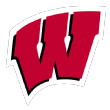
I had pegged the Badgers to win the West last year and in the penultimate game of the season they had a 320-221 yard edge at home vs. Iowa, but came up short in the red zone and lost by four. Had they won that game, they would have won the West with both teams at 7-1 (winning the tie-breaker). I'm concerned about the loss of defensive coordinator Dave Aranda, but they still will be solid on that side with six starters back. Offensively, they averaged just 150 yards per game rushing last year. The Badgers have my No. 4 rated O-line and No. 4 rated D-line in the league, but also play the toughest schedule by far as they draw Ohio State, Michigan State and Michigan out of the East and face Northwestern and Iowa on the road in the West. This team could be stronger than last year's but probably won't match its double digit win total.
T4. Northwestern Wildcats

After a pair of losing seasons, Northwestern bounced back and doubled its win total last year from five to 10. The Wildcats were actually 10-2 and No. 12 in the country prior to getting destroyed by Tennessee in the bowl. While NU was 6-2 in Big Ten play, it was minus-39.3 in yards per game differential, which was oddly 6.4 yards per game worse than 2014. The Wildcats may have the best back seven on defense in the league and a top-five defense overall, plus RB Justin Jackson and an improved QB Clayton Thorson. They do draw both Ohio State & Michigan State out of the East but are just an upset or two away from a second straight year of contending in the West.
T4. Minnesota Golden Gophers

Last year Minnesota opened up 4-2 but after a loss to Nebraska, coach Jerry Kill stepped aside (health reasons) and it went just 1-4 down the stretch. The Gophers did have a close loss at home to Michigan, where they were stopped on the last play with a chance to win. Minnesota got a reprieve at 5-7 and got the benefit of bowl game practices and closed the season with a bowl win. This year the teams avoids Michigan, Michigan State and Ohio State out of the East after having to face two of them last year. The Gophers have the best schedule of any team in the West and make my most improved list (No. 9).
6. Illinois Fighting Illini

Illinois made a bowl game two years ago and just missed out on one last year and despite having a losing record, were only minus-16.5 in yards per game differential in Big Ten play. The Illini do draw both Michigan and Michigan State out of the East and have five Big Ten road games (only four at home) and their 57.6 percent of letter winners returning is No. 125 in the country. With the addition of LB Hardy Nickerson, the defensive front seven will be solid and they have a veteran QB in Wes Lunt. While they'll be competitive just like last year, I will call for their streak of not having a winning season in the Big Ten play since 2007 to continue.
7. Purdue Boilermakers

Purdue showed me some things last year in coach Darrell Hazell's third season by whipping Nebraska at home and giving Michigan State and Iowa (both Big Ten title game teams) a battle to the finish (only trailed Iowa just 20-13 late 3Q). This year Purdue has the most experienced team in the Big Ten (No. 11 in FBS) with 16 returning starters, and it avoids Ohio State, Michigan and Michigan State out of the East. The Boilermakers only have four Big Ten home games and those are against four of the league powers. This means most of the winnable games are on the road and despite this being a much improved team, I'll call for a fourth consecutive year in the basement of the Big Ten West.
Ford's Big Board 1.0: Who's on top in 2017 NBA draft rankings?
The 2017 NBA draft is shaping up to be one of the strongest in the last decade. What top prospects should fans look forward to?
Our first 2017 Big Board has three very strong No. 1 candidates at the top of the draft and a host of exciting lottery picks. We're projecting as many as six to eight future All-Stars in this group.
The day after the draft, we debuted our first Top 100 of 2017. The Top 100 reflects a consensus of what NBA scouts and GMs are saying about players in the draft.
Our Big Board is a more detailed look at the top 30 players (essentially the first round) in our Top 100. It tracks player movement and stock fluctuation, and gives you the latest intel from NBA scouts. There have been a few changes based on the performance of players in summer camps and various international tournaments.
The biggest takeaway so far? If you need an elite point guard, this is your draft.
1. Josh Jackson

6-foot-8
Kansas
Freshman
Forward
There is no consensus No. 1 pick among NBA scouts right now, but it does appear that Jackson is the slight favorite. His combination of elite athleticism, competitiveness and feel for the game make him a matchup nightmare on both sides of the court.
One scout referred to him as a higher energy Andrew Wiggins, while another went with a more offensively polished Michael Kidd-Gilchrist. His inconsistent jump shot is his biggest weakness at this stage.
2. Harry Giles

6-foot-11
Duke
Freshman
Forward
Were it not for two torn ACLs (one during his sophomore year and one to start his senior year), Giles would be the hands-down consensus No. 1 pick right now. He's blessed with the rare combination of both elite physical tools and basketball skills. He ticks every single box an NBA scout would look for in a modern power forward.
If those knees are 100 percent and Giles can still show off the same level of athleticism he did in high school, then he could easily end up as the top pick in 2017. However, until scouts see him prove that on the court, there's a certain level of skepticism factored into this ranking.
3. Markelle Fultz

6-foot-5
Washington
Freshman
Guard
No one has had a better spring and summer than Fultz. After dominant performances at the McDonald's All-American game and the Nike Hoop Summit, Fultz wowed NBA scouts again by leading Team USA to a gold medal in the FIBA Americas Under-18 Championship. Fultz earned MVP honors for the tournament, averaging 13.8 PPG, 5.2 APG, 4.0 RPG and 3.2 SPG in drawing raves from scouts.
He's got elite size, a great feel for the game, can score from anywhere and delivers on the defensive end. In a draft loaded with stellar point guard prospects, he's the most complete player of the group. If the team that lands the No. 1 pick needs a point guard, he's going to be hard to pass up.
4. Dennis Smith

6-foot-2
NC State
Freshman
Guard
Fultz may be the top-ranked point guard prospect in the draft right now, but he certainly has plenty of competition. Smith tore his ACL last summer playing for Team USA but seemed to show off a full recovery at Adidas Nations last week.
Smith is one of the most explosive athletes in the draft and is a monster off the bounce and finishing at the rim. His quickness and aggressiveness are great on both ends of the court as well. He's very, very difficult to stop when his jump shot is falling
If his knee holds up all year and he has a dominant freshman season, he could move into the discussion for the No. 1 pick. He's that special.
5. Frank Ntilikina
6-foot-5
France
Age: 18
Guard
Scouts are still drooling over Ntilikina after a standout performance at Basketball Without Borders at the NBA All-Star Game in Toronto in February.
While Fultz might be the most complete prospect and Smith the most explosive, Ntilikina may best fit the pure point guard mold. He has an elite feel for the game for someone so young and is the consummate floor general. At 6-foot-5 with a 7-foot wingspan, he's got great size as well.
His jump shot is the weakest part of his game right now, and sometimes he can be too reluctant to look for his own shot, but scouts love his long-term potential.
6. Lonzo Ball

6-foot-5
UCLA
Freshman
Guard
Ball is more polarizing than Fultz, Smith or Ntilikina -- but the scouts that love him, really love him.
He averaged -- that's right, averaged -- a triple double his senior year. He's the most exciting playmaker of the group; there's a ton of sizzle to his game. He sees plays before anyone else on the floor does. He also has elite size for his position and while he's a streaky shooter, he has serious range on his jump shot.
Some scouts question whether the freewheeling style of ball he played in high school alongside his two younger brothers will translate to the college game. But if it does? We probably have him too low.
7. Jayson Tatum

6-foot-8
Duke
Freshman
Forward
A number of teams have Tatum ranked in their top five, and he could easily end up there with a strong freshman season. He's versatile, has an aggressive knack for scoring and has prototypical size for his position.
His lack of a 3-point shot (most of his work is done in the midrange game), lack of great defensive effort and lack of court vision all are working against him, though. Modern wings that don't pass or shoot 3s aren't particularly the rage right now, so I'm a little skeptical.
8. Jonathan Isaac

6-foot-11
FSU
Freshman
Forward
Isaac is auditioning to be this year's Brandon Ingram -- the rail-thin, super-long forward who can score from anywhere on the floor. He needs to add a lot of strength and get more consistent, but if he breaks out at Florida State, he too could end up being worthy of a top-five pick.
9. De'Aaron Fox

6-foot-4
Kentucky
Freshman
Guard
Given how strong Kentucky's incoming class is, it's hard to believe they don't have a prospect ranked in the top five. It just goes to show you how strong this incoming class is.
Fox has the best chance of getting there. In a normal draft, he could easily project as the top PG. He's got size, quickness, aggressiveness on both ends of the court and looks like a promising playmaker.
He needs to get stronger and improve his jumper, but there are a lot of tools there that can make him successful in the NBA, especially on the defensive end.
10. Ivan Rabb

6-foot-10
Cal
Sophomore
Forward
Rabb is the first non-freshman on the board, which speaks more to the strength of the freshman class than to his own abilities.
Rabb had a strong first season at Cal and proved to be both a capable rebounder and defender as well as a player who can score both in the paint and in the midrange. He needs to continue to get stronger, but with Jaylen Brown and Ty Wallace off to the NBA, this is his team now, and he could end up dramatically increasing his scoring totals as a sophomore.
11. Jarrett Allen

6-foot-11
Texas
Freshman
Center
Allen impressed NBA scouts at the Nike Hoop Summit and again at the FIBA Americas Under-18 Championship, where he averaged 10.6 points and nine rebounds in 24 minutes per game. He needs to get stronger and be willing to play more physically, but his elite length and mobility combined with good defensive instincts should all translate to the next level.
If he has a big freshman season at Texas, he could end up being the first center off the board.
12. Edrice Adebayo

6-foot-9
Kentucky
Freshman
Forward
"Bam" Adebayo already has the NBA body and athleticism that teams crave in their power forwards. He's an explosive athlete who plays with a great motor. He's going to be a rebounding and shot-blocking machine for Kentucky.
However, his offensive game is still pretty raw. He really needs to develop some sort of perimeter game.
13. Marques Bolden

6-foot-11
Duke
Freshman
Center
Scouts are hoping that Bolden's on-court decision making catches up with his elite physical tools. He's got NBA-level size for his position (including a huge 7-foot-6 wingspan) and the strength to hold his own in the league right now. He also has the skills to score in the paint and be a great defender, but his effort on both ends is often lacking.
If Mike Krzyzewski can get him to play hard at Duke, he'll move up the board quickly; this isn't a great draft for big men and Bolden has all the physical tools NBA scouts are looking for.
14. Edmond Sumner

6-foot-5
Xavier
Sophomore
Guard
Sumner had a solid freshman year at Xavier, but scouts expect to see a big jump this year after a terrific performance at the Nike Skills Academy this summer.
He's up to 190 pounds, which is a major plus. He's got the size and athleticism that teams covet in a point guard. He just needs to show more consistency as a jump-shooter.
15. Malik Monk

6-foot-3
Kentucky
Freshman
Guard
Monk is an athletic freak and a big-time scorer. He's relentless at getting to the rim and his ballhandling abilities are strong enough that some teams believe he can play both the 1 and the 2 at the next level.
The biggest knocks on his game right now are his jump shot and size for a 2-guard (6-foot-3, 185 pounds).
16. OG Anunoby

6-foot-8
Indiana
Sophomore
Forward
Anunoby broke out during a stellar performance in the NCAA tournament. He shut down Jamal Murray in one game and projects as the type of 3-and-D player scouts really love.
If he gets a lot more touches this season, he could have a Victor Oladipo-type rise. There's lots of raw talent there.
17. Lauri Markkanen
6-foot-11
Arizona
Freshman
Forward
Markkanen had a huge week at the FIBA Europe Under-20 Championship in late July. He averaged 25 PPG, 8.5 RPG and made 13 3s in the tournament -- a stat that really caught NBA scouts' attention.
Seven-footers who can shoot the ball, rebound and move well on both ends of the floor don't come along very often. Seen as a borderline first rounder before the summer, Markkanen has moved up to the lottery on the boards of several scouts.
18. Omer Yurtseven

7-foot
NC State
Freshman
Center
Yurtseven was also impressive at the FIBA Europe Under-20 Championship -- especially considering that he just turned 18 years old and was averaging only 18 minutes per contest for Turkey. His numbers of 10.5 PPG, 5.5 RPG and 1.5 BPG were very strong for a player his age.
He's a very polished low-post player and rebounder for his age. As long as the NCAA clears him to play at NC State, he could have a monster year alongside Dennis Smith.
19. Carlton Bragg

6-foot-9
Kansas
Sophomore
Forward
Most of the NBA scouts that watched Kansas in practice last year swore that Bragg was the best NBA prospect on the team. That will clearly change with Josh Jackson joining the fray at KU, but Bragg's versatility, defensive potential and overall activity make him a very solid prospect.
Scouts were impressed with him at Adidas Nations and said that he seems to have grown an inch or two. With Perry Ellis gone, he should get a lot more touches on offense.
20. Terrance Ferguson

6-foot-7
Australia
Age: 19
Guard
Ferguson impressed NBA scouts with a stellar shooting performance at the Nike Hoop Summit. There just aren't a lot of elite shooters in this draft and when Ferguson gets going, he's very hard to stop.
However, his decision to skip his freshman year at Arizona and play professionally in Australia hurt his draft stock some. He has the talent of a lottery pick, but will he be able to prove it internationally?
21. Rodions Kurucs
6-foot-9
Latvia
Age: 18
Forward
Kurucs is a draft sleeper that some scouts feel will likely take a big jump this year. He's got great size, shoots well and has shown excellent athleticism. He doesn't get any playing time for FC Barcelona, but scouts who have seen him play a lot in practices think he's the real deal.
22. Tyler Lydon

6-foot-9
Syracuse
Sophomore
Forward
Lydon has a coveted set of skills: He can shoot the 3, protect the rim and shows terrific athleticism.
He needs to add some consistency to his game, but that should come as a sophomore.
23. Isaiah Hartenstein
6-foot-11
Germany
Age: 18
Forward
Hartenstein is a skilled big man who can really score from anywhere on the floor. He was another standout at the Basketball Without Borders tournament at the NBA All-Star Game in February, and a few scouts think he could be a lottery pick.
Others feel he's another year or two away, especially with his feel for the game still developing. But all the skills of an NBA player are there.
24. Miles Bridges

6-foot-8
Michigan State
Freshman
Forward
Bridges has an NBA body, elite athleticism and plays with a terrific motor. He's a monster finisher at the rim.
But until he adds a perimeter game and shows the ability to create his own shot off the bounce, some scouts are skeptical he's ready to be a one-and-done.
25. Thomas Bryant

6-foot-11
Indiana
Sophomore
Center
Bryant had a super-efficient freshman season. He's huge, can clear out space and score at the basket, and even has a nice perimeter game. He plays hard, too.
His lack of foot speed and explosive athleticism limit his upside somewhat.
26. Jonathan Jeanne

7-foot-2
France
Age: 19
Forward/center
Jeanne is mostly attractive as a prospect for his upside at the moment. He's a fluid athlete that stands at 7-foot-2 with a 7-foot-6 wingspan.
There are all sorts of skills there, but he needs to add a lot of strength and experience. If he shows some development in France this year, he'll be worthy of a top-20 pick.
27. Kostja Mushidi
6-foot-5
Belgium
Age: 18
Guard
Mushidi has been on the radar for some time, and after a 26-point performance on 8-for-12 shooting for Germany in the FIBA Europe Under-20 Championship and a decision to play for Mega Leks next season in Serbia (the same team that produced Timothe Luwawu-Cabarrot and Ivica Zubaclast year), many scouts feel he should be a first-round pick next season.
He's an elite athlete and already has an NBA body; he just needs to be a more consistent shooter. He should get consistent minutes at Mega Leks next season, which should help his cause.
28. Grayson Allen

6-foot-5
Duke
Junior
Guard
Allen had a terrific sophomore season but failed to convince NBA scouts he was a first-round pick.
He's a great athlete, can shoot the ball and he's very tough, but his lack of size makes him a bit of a tweener.
29. Jalen Brunson

6-foot-2
Villanova
Sophomore
Guard
Brunson is a do-it-all point guard with great leadership abilities. He'll take over the keys to a team that just won the NCAA title.
The only real question is his lack of elite athleticism. His strong play at the Nike Skills Academy had some scouts ready to say, given all of his other tools, he'll find a way to make it in the NBA.
30. Malik Pope

6-foot-10
SDSU
Junior
Forward
Pope remains an enigma: He has the size, athleticism and shooting skills to be a terrific NBA player, but he's frustratingly inconsistent and can disappear for weeks before showing a dominant performance.
Scouts are hoping this is the year he puts it all together consistently on the court.
Next five in
Jaron Blossomgame, SF, Sr., Clemson; Bennie Boatwright, PF, So., USC Dwayne Bacon, SF, So., Florida State; Frank Jackson, PG, Fr., Duke; Mikal Bridges, SF, So., Villanova

6-foot-3
Kentucky
Freshman
Guard
Monk is an athletic freak and a big-time scorer. He's relentless at getting to the rim and his ballhandling abilities are strong enough that some teams believe he can play both the 1 and the 2 at the next level.
The biggest knocks on his game right now are his jump shot and size for a 2-guard (6-foot-3, 185 pounds).
16. OG Anunoby

6-foot-8
Indiana
Sophomore
Forward
Anunoby broke out during a stellar performance in the NCAA tournament. He shut down Jamal Murray in one game and projects as the type of 3-and-D player scouts really love.
If he gets a lot more touches this season, he could have a Victor Oladipo-type rise. There's lots of raw talent there.
17. Lauri Markkanen
6-foot-11
Arizona
Freshman
Forward
Markkanen had a huge week at the FIBA Europe Under-20 Championship in late July. He averaged 25 PPG, 8.5 RPG and made 13 3s in the tournament -- a stat that really caught NBA scouts' attention.
Seven-footers who can shoot the ball, rebound and move well on both ends of the floor don't come along very often. Seen as a borderline first rounder before the summer, Markkanen has moved up to the lottery on the boards of several scouts.
18. Omer Yurtseven

7-foot
NC State
Freshman
Center
Yurtseven was also impressive at the FIBA Europe Under-20 Championship -- especially considering that he just turned 18 years old and was averaging only 18 minutes per contest for Turkey. His numbers of 10.5 PPG, 5.5 RPG and 1.5 BPG were very strong for a player his age.
He's a very polished low-post player and rebounder for his age. As long as the NCAA clears him to play at NC State, he could have a monster year alongside Dennis Smith.
19. Carlton Bragg

6-foot-9
Kansas
Sophomore
Forward
Most of the NBA scouts that watched Kansas in practice last year swore that Bragg was the best NBA prospect on the team. That will clearly change with Josh Jackson joining the fray at KU, but Bragg's versatility, defensive potential and overall activity make him a very solid prospect.
Scouts were impressed with him at Adidas Nations and said that he seems to have grown an inch or two. With Perry Ellis gone, he should get a lot more touches on offense.
20. Terrance Ferguson

6-foot-7
Australia
Age: 19
Guard
Ferguson impressed NBA scouts with a stellar shooting performance at the Nike Hoop Summit. There just aren't a lot of elite shooters in this draft and when Ferguson gets going, he's very hard to stop.
However, his decision to skip his freshman year at Arizona and play professionally in Australia hurt his draft stock some. He has the talent of a lottery pick, but will he be able to prove it internationally?
21. Rodions Kurucs
6-foot-9
Latvia
Age: 18
Forward
Kurucs is a draft sleeper that some scouts feel will likely take a big jump this year. He's got great size, shoots well and has shown excellent athleticism. He doesn't get any playing time for FC Barcelona, but scouts who have seen him play a lot in practices think he's the real deal.
22. Tyler Lydon

6-foot-9
Syracuse
Sophomore
Forward
Lydon has a coveted set of skills: He can shoot the 3, protect the rim and shows terrific athleticism.
He needs to add some consistency to his game, but that should come as a sophomore.
23. Isaiah Hartenstein
6-foot-11
Germany
Age: 18
Forward
Hartenstein is a skilled big man who can really score from anywhere on the floor. He was another standout at the Basketball Without Borders tournament at the NBA All-Star Game in February, and a few scouts think he could be a lottery pick.
Others feel he's another year or two away, especially with his feel for the game still developing. But all the skills of an NBA player are there.
24. Miles Bridges

6-foot-8
Michigan State
Freshman
Forward
Bridges has an NBA body, elite athleticism and plays with a terrific motor. He's a monster finisher at the rim.
But until he adds a perimeter game and shows the ability to create his own shot off the bounce, some scouts are skeptical he's ready to be a one-and-done.
25. Thomas Bryant

6-foot-11
Indiana
Sophomore
Center
Bryant had a super-efficient freshman season. He's huge, can clear out space and score at the basket, and even has a nice perimeter game. He plays hard, too.
His lack of foot speed and explosive athleticism limit his upside somewhat.
26. Jonathan Jeanne

7-foot-2
France
Age: 19
Forward/center
Jeanne is mostly attractive as a prospect for his upside at the moment. He's a fluid athlete that stands at 7-foot-2 with a 7-foot-6 wingspan.
There are all sorts of skills there, but he needs to add a lot of strength and experience. If he shows some development in France this year, he'll be worthy of a top-20 pick.
27. Kostja Mushidi
6-foot-5
Belgium
Age: 18
Guard
Mushidi has been on the radar for some time, and after a 26-point performance on 8-for-12 shooting for Germany in the FIBA Europe Under-20 Championship and a decision to play for Mega Leks next season in Serbia (the same team that produced Timothe Luwawu-Cabarrot and Ivica Zubaclast year), many scouts feel he should be a first-round pick next season.
He's an elite athlete and already has an NBA body; he just needs to be a more consistent shooter. He should get consistent minutes at Mega Leks next season, which should help his cause.
28. Grayson Allen

6-foot-5
Duke
Junior
Guard
Allen had a terrific sophomore season but failed to convince NBA scouts he was a first-round pick.
He's a great athlete, can shoot the ball and he's very tough, but his lack of size makes him a bit of a tweener.
29. Jalen Brunson

6-foot-2
Villanova
Sophomore
Guard
Brunson is a do-it-all point guard with great leadership abilities. He'll take over the keys to a team that just won the NCAA title.
The only real question is his lack of elite athleticism. His strong play at the Nike Skills Academy had some scouts ready to say, given all of his other tools, he'll find a way to make it in the NBA.
30. Malik Pope

6-foot-10
SDSU
Junior
Forward
Pope remains an enigma: He has the size, athleticism and shooting skills to be a terrific NBA player, but he's frustratingly inconsistent and can disappear for weeks before showing a dominant performance.
Scouts are hoping this is the year he puts it all together consistently on the court.
Next five in
Jaron Blossomgame, SF, Sr., Clemson; Bennie Boatwright, PF, So., USC Dwayne Bacon, SF, So., Florida State; Frank Jackson, PG, Fr., Duke; Mikal Bridges, SF, So., Villanova
Patrick Kane
Superstar
Harper? Stanton? The most overrated player on all 30 MLB teams
What does it mean to be overrated? It doesn't mean the player is necessarily bad, just not as great as the hype would indicate. So in coming up with this list, I tried to weigh a general perception of how the player is viewed and how that contrasts with his actual on-field value. I'm sure I made some choices you'll disagree with. That's OK. Fire away. (Note: Teams are listed in order of the current standings.)
NL East

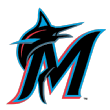

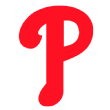
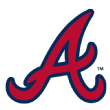
NL Central


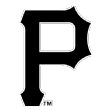


NL West
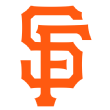
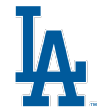



AL East
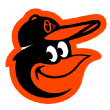
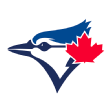
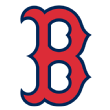
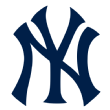

Dr. Narcisse
Veteran
Ranking young QBs with most upside
Oakland Raiders quarterback Derek Carr threw for 3,987 yards and 32 touchdowns in 2015. The tape is nice, too. And at only 25 years old, Carr's upside is off the charts. The arm strength that resembles a howitzer, the touch throws, the movement skills: Carr is rapidly developing a deep toolbox at the position with only two years of experience on his pro resume.
So, where does Carr stand among the young quarterbacks in the NFL? While we wait to get a look at rookies Jared Goff and Carson Wentz against pro competition, let's rank the 25-and-under signal-callers in the NFL -- Jacksonville's Blake Bortles, Minnesota's Teddy Bridgewater, Oakland's Carr, Tennessee's Marcus Mariota, Houston's Brock Osweiler and Tampa Bay's Jameis Winston -- based on their upside.
1. Derek Carr, Oakland Raiders
The upside: From the velocity on his throws, to the touch he has developed to target the seam or fade, Carr has the makings of a star player in this league. In only two seasons, Carr has tossed 53 touchdowns and his Total QBR climbed from 38.2 as a rookie to 49.2 in his second season. The developmental signs are there and the upside should have Raiders fans thinking big.
You want to see Carr sling it? Go check out some of the throws he made against the Pittsburgh Steelers. The skinny post, the seam to split the safeties. Big time. Or turn on the tape against the Green Bay Packers and watch Carr drop an absolute dime on the deep corner route to Amari Cooper. Wow. That's legit stuff.
On deep-ball throws (20 or more yards), Carr's numbers are excellent: 93.9 Total QBR (10th in the NFL), along with 10 touchdowns (tied for third). He can get it out there. And he's not afraid to challenge the opposing secondary. That means finding tight windows, seeing the safety and fitting the ball in for another explosive gain.
I mentioned the movement skills on Carr above because he can get outside the pocket, he's athletic and he's also a natural for today's spread game. Raiders offensive coordinator Bill Musgrave has done a very good job mixing spread and pro concepts together in the game plan for Carr. That's why we see the RPOs (run-pass options) show up on the tape. And that's also why the Raiders can reduce the formation or widen the field. Carr is a fit there.
The concern: Carr can panic at times. That showed up in the fourth quarter of the Raiders' Week 13 loss at home to the Kansas City Chiefs. Carr's gunslinger mentality hurt him a bit. Carr did throw 13 interceptions this past season and I think he can add some thickness still to his frame (listed at 6-foot-3, 215 pounds) to survive the beating he is going to take over the course of a long career.
But in terms of straight upside, Carr has it. The ball comes out hot, and his skill set is a fit for today's league.
2. Jameis Winston, Tampa Bay Buccaneers
The upside: Winston played like a rookie during the first month of the season in 2015. From Weeks 1-4, he posted a 35.6 Total QBR (27th overall). But from Weeks 5-17, that QBR rose to 65.6 (10th). And, really, the slow start should have been expected as opposing defensive coordinators worked to confuse the young quarterback with coverage disguises and late safety rotations.
But as Winston showed on the tape last year, he has the tools, the pro-style mold and the intangibles at the position to accelerate his development in his second season. I call him a "gamer," because he makes plays in critical situations, or when the competition level rises. That includes throwing the seam, making a play with his feet, moving the safety to create a window or challenging the secondary in the middle of the field. And he's tough. Really tough. Pro guys love that stuff when their QB takes a shot and keeps playing. Those are the leaders of the team.
You want to see a young quarterback manipulate the safety over the top of the defense? Then watch Winston against the Atlanta Falcons or Philadelphia Eagles. In the three- and five-step game, he can generate daylight to deliver inside breaking routes (slant, post, bang 8). That's part of the reason why Winston ranked 10th in Total QBR (90.1) on throws between 10 and 20 yards down the field.
The concern: At times, Winston struggles with overall mechanics and patience underneath. At times, he looks rushed on short throws. In 2015, Winston's QBR on throws under 10 yards dropped to 50.2 (28th overall). And while he's not a pure deep ball thrower either -- he ranked 28th in QBR on throws 21 yards or more downfield -- he has the talent to improve both of those throwing levels.
Given the reports of Winston dropping weight and improving his conditioning this offseason, there is a tremendous amount of upside for a quarterback who threw for 4,402 yards in 2015 -- the third most by a rookie. He can play.
3. Marcus Mariota, Tennessee Titans
The upside: The narratives surrounding Mariota throughout the draft process on the offensive system he ran at Oregon were a bit shortsighted. The tape tells us he can play -- and produce -- in a pro offense. In 12 games last season, Mariota threw for 2,818 yards, and he also tossed 19 touchdowns with a Total QBR of 61.0 (16th overall). That's a good number for a rookie, especially one who was supposedly "transitioning" from a college spread system. Please. Mariota's skill set can work in any offense you draw up.
Now, from an upside perspective, there is a ton to like with Mariota given his tape, athleticism and natural throwing motion. He has 4.5 speed. That's flying for a quarterback. But it was also underutilized last season in Tennessee. In fact, Mariota had only 17 designed quarterback runs in 2015. That's too low of a number given his ability to put stress on an opposing defense with his legs. The touchdown run he produced on the zone-read scheme against Jacksonville last season is a prime example.
That has to change this season, along with more RPOs to cater to his skill set. Put this guy in situations that maximize his talent while creating even more opportunities in the passing game.
Mariota can throw every route in the playbook, too. And that's inside or outside of the pocket. Movement passes are a positive thing with Mariota. He has enough juice in his arm to test the top of the secondary, and he has a nice touch on the ball when finding open windows over the top of the linebackers in zone coverage. And his footwork -- while still improving -- is much better than I expected. Again, he's a natural at the position with the vision and quick release to challenge.
The concern: This one is easy: Durability. Mariota has a thin frame and he missed four games last season (knee) while taking a beating in that system. The Titans can protect him by running the football more under Mike Mularkey and taking some of the stress off their young quarterback. This isn't a guy who should be throwing 40-plus passes a game.
The key here is to facilitate his growth at the position, cater to his skill set and take advantage of the unique upside he brings to the NFL. Get creative, use that talent and showcase a quarterback who is the future of the league. Fast and athletic with the natural passing skills to win.
4. Blake Bortles, Jacksonville Jaguars
The upside: The 2015 numbers from Bortles jump off the page: 4,428 yards and 35 touchdowns. Those are monster stats for a second-year quarterback. And we've seen the development on tape, too. In 2014, as a rookie, Bortles posted a lowly 25.2 Total QBR, but that climbed to 46.5 in his second season. And that speaks to his growth/upside.
Bortles improved his footwork and field vision this past season and his overall technique is much better. Plus, he had more control of the offense in his second season. The arm strength? There's enough. He can get the ball down the field and I love his size/athleticism in the pro game. At 6-foot-5, 246 pounds, with the movement skills to get to the edge of the pocket, Bortles has the frame to take shots over a 16-game season.
Now, I will question some of those numbers he posted because of the game situation. Trailing often, Bortles could play without a conscience against some soft defensive looks. Think Cover 2 or Cover 6 (quarter-quarter-half) with defenses sitting back in zone shells. And Bortles took advantage of those opportunities with deep shots to wide receivers Allen Hurns and Allen Robinson.
Take the game down in New Orleans this past season against the Saints. With the Jags in a 24-0 hole (after two rough Bortles interceptions), and a poor Saints defense sitting back deep in the secondary, Bortles had windows to expose. Take the drop and chuck it.
Does that mean there is less upside for Bortles? Nah. But his overall numbers should take a drop this season. And that's fine if the Gus Bradley's squad can run the football and control the tempo while taking more calculated shots in the game plan.
The concern: His decision making. He still forces throws and can be late with the ball (check out Josh Norman's pick against Bortles on a late throw to the flat). He needs to be quicker with his reads. Bortles threw 18 interceptions last season. And while some of that can be contributed the game situations we just talked about, he has to cut down on the turnovers. That's a must.
5. Teddy Bridgewater, Minnesota Vikings
The upside: Of all the quarterbacks on this list, Bridgewater posted the highest Total QBR this past season (62.7). He's consistent, he's smart with the ball and he will battle. Go to the tape, against quality defenses such as the Denver Broncos or Arizona Cardinals, and watch him compete. He plays hard.
Those are good games to watch on Bridgewater because they highlight his ability to maneuver in the pocket while also challenging the secondary on short-to-intermediate routes against top-tier defensive units.
In 2015, Bridgewater posted a Total QBR of 88.8 on throws between 10 and 20 yards downfield (12th overall). He has a really soft touch when throwing the seam, and enough power in that arm to deliver the ball on the deep comeback or out cut. Where he struggled was on throws over the top, 21 or more yards down the field. That's when his QBR dropped to 36.5 (30th overall). Sure, Bridgewater can still get the ball down the field. There are examples of that this past season when he targeted Stefon Diggs or Mike Wallace. But he doesn't have an arm like Carr and his accuracy slips a bit on deep balls.
The concern: I would love to see him add some size. He is listed at just 6-foot-2, 215 pounds. Can he hold up?
And we have to mention the system Bridgewater plays in under Norv Turner. You will see more throws underneath -- shallow crossers, flat routes, curls, etc. It's a conservative offense with Adrian Peterson as the focal point of the game plan. And Bridgewater takes what the defense gives him. If that means throwing the check-down or opting for an underneath target, that's where he is going with the ball.
That's why I'm a little low on Bridgewater here in terms of his overall upside at this stage of his career. But I would also say that Bridgewater has the highest floor of the group. He's solid. He's consistent. He's a low-risk quarterback with the skill set to win playing within Turner's system and the personnel around him.
6. Brock Osweiler, Houston Texans
The upside: With only seven starts in 2015, the tape on Osweiler is limited. And it's pretty underwhelming, too. Playing with an all-world defense in Denver last season, Osweiler was more of a game manager in Gary Kubiak's system. And the numbers supported that: 10 touchdowns, six interceptions and a Total QBR of 48.8. Think of quick throws, the boot game and some calculated shots down the field when the Broncos got the look they wanted.
Now, I like his size in the pocket (6-foot-8, 240 pounds). Plus, the big man can move a little bit. That shows up in the boot game, and he is pretty advanced with his footwork in the pocket. He can slide the feet, throw the shoulder forward and climb. And he is quick to find underneath options in the passing game.
This past season, on throws of 15 yards or less, Osweiler ranked eighth with a total QBR of 75.9. He can get the ball out, find the option routes, the stick concepts, the shallow crossers and the high-low combos in the middle of the field. Think about the intermediate routes too -- the ones that break between 12-15 yards. That could be the curl or dig inside the numbers and the comeback outside. That's where Osweiler is going to earn his money this season under Bill O'Brien in Houston.
The concern: On throws 20 or more yards downfield, Osweiler lacks some zip and accuracy on the ball. Last year, his QBR on such throws dropped to 35.7 (31st overall) and he completed only 25 percent of his passes (30th). Sure, there are good plays on the tape, such as the deep seam route against the Steelers where Osweiler rips the ball to split the top of the secondary. But overall, his game has to improve when throwing the top of the vertical route tree.
The way I see it, Osweiler has to make some developmental gains. And the Texans have added some nice pieces to the offense to facilitate that. Along with stud wide receiver DeAndre Hopkins, there is new speed in Houston with Lamar Miller at running back and rookie receivers Will Fullerand Braxton Miller. And given that the Texans' offense is built on three- and five-step timing routes, Osweiler is in a very solid situation to grow at the position.
But until we see that growth and development, the upside right now on Osweiler is still kind of a mystery. He has size, mobility and the arm to produce in a system like O'Brien's. Now we just have to see it play out.
The upside: With only seven starts in 2015, the tape on Osweiler is limited. And it's pretty underwhelming, too. Playing with an all-world defense in Denver last season, Osweiler was more of a game manager in Gary Kubiak's system. And the numbers supported that: 10 touchdowns, six interceptions and a Total QBR of 48.8. Think of quick throws, the boot game and some calculated shots down the field when the Broncos got the look they wanted.
Now, I like his size in the pocket (6-foot-8, 240 pounds). Plus, the big man can move a little bit. That shows up in the boot game, and he is pretty advanced with his footwork in the pocket. He can slide the feet, throw the shoulder forward and climb. And he is quick to find underneath options in the passing game.
This past season, on throws of 15 yards or less, Osweiler ranked eighth with a total QBR of 75.9. He can get the ball out, find the option routes, the stick concepts, the shallow crossers and the high-low combos in the middle of the field. Think about the intermediate routes too -- the ones that break between 12-15 yards. That could be the curl or dig inside the numbers and the comeback outside. That's where Osweiler is going to earn his money this season under Bill O'Brien in Houston.
The concern: On throws 20 or more yards downfield, Osweiler lacks some zip and accuracy on the ball. Last year, his QBR on such throws dropped to 35.7 (31st overall) and he completed only 25 percent of his passes (30th). Sure, there are good plays on the tape, such as the deep seam route against the Steelers where Osweiler rips the ball to split the top of the secondary. But overall, his game has to improve when throwing the top of the vertical route tree.
The way I see it, Osweiler has to make some developmental gains. And the Texans have added some nice pieces to the offense to facilitate that. Along with stud wide receiver DeAndre Hopkins, there is new speed in Houston with Lamar Miller at running back and rookie receivers Will Fullerand Braxton Miller. And given that the Texans' offense is built on three- and five-step timing routes, Osweiler is in a very solid situation to grow at the position.
But until we see that growth and development, the upside right now on Osweiler is still kind of a mystery. He has size, mobility and the arm to produce in a system like O'Brien's. Now we just have to see it play out.